It is interesting to consider the perspective of the Sadducees. Their opinion about there being no resurrection of the dead was not a popular opinion, but one held mostly by the economically and socially elite. Their opinions and self-justifications are based on false ideas that assume the next life would basically be like this one. A devastating lack of hope has undoubtedly fueled their blindness. Jesus even has to tell them at the end of today’s Gospel that they are greatly misled. Was it their wealth that misled them? Was it their apparent success or power? Those who think they have mastered or can master this world will despair of the next. Those who recognize the brokenness of this world and the people in it may understand that this is only the beginning of God’s work of re-creation. The longings for wholeness, peace, happiness, truth, love, etc. aim for something that is not broken. If these longings of our hearts connect with their author – God Himself – He confirms them. We are only denied the possibility of happiness in this world to the extent that this world is disconnected from its Creator and broken. God would not create anything that He could not repair. For broken creatures created in His image and likeness, His grace needs only our willingness to restore us in the flesh beyond the brokenness of death. Nothing we could imagine would bring us close to the reality of heaven. We can only approach the reality of heaven by ridding ourselves of the attachments we have to what is broken.
THEODORET OF CYR:
Grace was given to us so that we might not be afraid but love all the more steadily.[/note]INTERPRETATION OF THE SECOND LETTER TO TIMOTHY. Gorday, P. (Ed.). (2000). Colossians, 1–2 Thessalonians, 1–2 Timothy, Titus, Philemon (p. 232). Downers Grove, IL: InterVarsity Press.[/note]
CHRYSOSTOM:
For it was that death on the cross that saved the world when it was perishing. That death connected earth with heaven; that death destroyed the power of the devil and made men angels and sons of God; that death raised our nature to the kingly throne. Those chains enabled the conversion of many.1
AMBROSIASTER:
When Paul says that we are not called according to our works, he means that all who are called are sinners, though by comparison with others some were found to be more worthy. With regard to God’s own grace, however, all were totally unworthy.2
AUGUSTINE:
Why is he a lamb in his suffering? Because, although he was innocent, he suffered death. Why is he a lion in his suffering? Because he slew death when he himself was slain. Why is he a lamb in his resurrection? Because his innocence is everlasting. Why is he a lion in his resurrection? Because his power is everlasting.3
The Sadducees’ question seems to assume that they know without asking that Jesus believes in the resurrection of the dead; their question, assuming this belief, tries to ridicule him by a reductio ad absurdum. This may be an indication that most of the Jewish populace of Palestine believed in resurrection. The Pharisees certainly did, and they were, according to Josephus, the most influential Jewish sect (see War 2.162; Ant. 18.15). The Essenes probably did as well (Josephus, War 2.154; cf. 4Q521). The Sadducees, who disagreed, were a sect whose members were mostly limited to the socioeconomic elite.4
Footnotes
- HOMILIES ON 2 TIMOTHY 2. Gorday, P. (Ed.). (2000). Colossians, 1–2 Thessalonians, 1–2 Timothy, Titus, Philemon (p. 234). Downers Grove, IL: InterVarsity Press.
- COMMENTARY ON THE SECOND LETTER TO TIMOTHY. Gorday, P. (Ed.). (2000). Colossians, 1–2 Thessalonians, 1–2 Timothy, Titus, Philemon (p. 234). Downers Grove, IL: InterVarsity Press.
- Sermons 4.1. Gorday, P. (Ed.). (2000). Colossians, 1–2 Thessalonians, 1–2 Timothy, Titus, Philemon (p. 235). Downers Grove, IL: InterVarsity Press.
- Marcus, J. (2009). Mark 8–16: A New Translation with Introduction and Commentary (Vol. 27A, p. 827). New Haven; London: Yale University Press.

